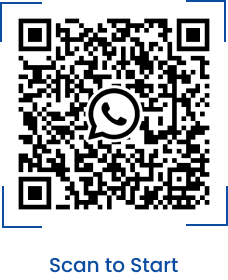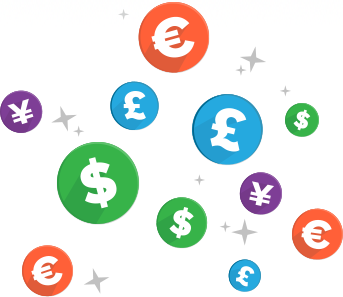The Kuwaiti Dinar, code: KWD, is the official currency of Kuwait. This Kuwaiti currency is the world?s highest valued currency and is pegged to an undisclosed international currency basket. One Kuwaiti Dinar is made up of 1000 Fils. Till date, six series of the Kuwaiti Dinar currency have been printed and are in circulation. Some of the reasons why the
Kuwaiti Dinar rate today is so strong include:
1. Fixed rate currency, therefore it maintains its spiked value, despite market fluctuations.
2. Kuwait owns 10% of the world?s crude oil reserves.
3. It is a tax-free country and 95% of exports and government incomes comes through petroleum.
Some facts that you ought to know about the Kuwaiti currency:
1. The short name for the US Dollar is KWD.
2. The most frequently used coins are 5 Fils, 10 Fils, 20 Fils, 50 Fils, 100 Fils.
3. The most commonly used banknotes include 0.25 Dinar, 0.5 Dinar, 1 Dinar, 5 Dinars, 10 Dinars, 20 Dinars
History of Kuwaiti Dinar
The history of the Kuwaiti Dinar (KWD) is quite intriguing. After the Ottoman Empire was defeated, treaties that had been in existence since then were terminated in 1961. This gave Kuwait the autonomy it wanted from the UK.
Next, Kuwait was governed by the British colonial power following the collapse of the Ottoman Empire. As a result, they started using the Indian rupee as a medium of exchange. The Gulf rupee, which was actually pegged to the Indian rupee, arrived as a successor in 1959. Later, the British pound and the Gulf rupee were pegged.
During 1959 and 1966, the Gulf rupee was accepted as legal tender throughout the British protectorates of the Arabian Peninsula surrounding the Persian Gulf. These protectorates included Kuwait, Bahrain, Qatar, the United Arab Emirates, and Oman in modern times.
However, with the introduction of the Kuwaiti dinar in 1960, there was another establishment that took place that year. It was the Kuwaiti Currency Board. The board was supposed to look after the creation of Kuwaiti Currency under the Kuwaiti Currency Law. Thus, the Gulf rupee was replaced/phased out in favour of the Kuwaiti dinar, in 1961 by the Kuwaiti Currency Board.
Yet again, the Kuwaiti dinar was substituted by the Iraqi dinar after Iraq conquered Kuwait in 1990. Apparently, a significant amount of banknotes were confiscated by the invading army. Nevertheless, following liberation, the Kuwaiti dinar was reinstated as the nation's currency, and a whole new fresh batch of banknotes was released, thereby enabling the demonetisation of earlier notes, including the ones that had been stolen.
Today, the dinar is not only used as a medium of exchange in Kuwait; but it is also a legal tender in a number of other Middle Eastern nations , including Jordan, Algeria, and Bahrain. However, despite being one of the most valued currencies globally, the dinar is not frequently exchanged on the foreign exchange market.
Going back, the Kuwaiti dinar was linked to a basket of currencies chosen by the Kuwaiti Currency Board from 1975 to 2003. The Kuwaiti dinar was then tied to the US dollar, back in 2003, at a rate of 0.299631 dinars to 1 dollar. That held true until 2007 when the Kuwaiti Currency Board switched back to a currency basket. This occurred right ahead of the outbreak of the American financial crisis. Since then, this system continues to be in use today. The value of a Kuwaiti dinar as of December 2021 was approximately USD 3.3, making it one of the most valued currencies on the planet.
Factors Affecting Kuwaiti Dinar
The rate/level of demand in the global market determines how strong a currency truly is. In fact, compared to the British Pound, USD, Euro, and other world currencies, the Kuwaiti dinar has a number of advantages over them. Moreover, there is no doubt that Kuwait's oil resources have made the dinar very valuable. Yet, there are a lot more factors that actually influence the Kuwaiti dinar to a great extent. Let's have a look.
1. Significant oil exporter:
Kuwait is a significant oil exporter. Speaking of statistics, about ten percent of the world's reserves, which equals around 104 billion barrels (15 km3), of crude oil were believed to be in Kuwait just a few years ago. Consequently, due to the increasing demand for oil, many nations require dinar to buy it. This in turn does nothing but increases the overall rate of exchange.
2. Prudent use of oil revenue :
In contrast to some African nations including Nigeria and others where revenues from oil sales generally turn out to be a disaster caused by political corruption and mismanagement by public officials, Kuwait is slightly different. The country uses the money obtained from the oil supplies to expand its nation's infrastructure and its microeconomic sectors to boost the overall gross domestic product (GDP). That in turn, makes the Kuwaiti dinar quite strong and stable.
3. Tax-free nation:
Being a tax-free nation, Kuwait's government derives around 75% of its income from the oil sector. This further makes up for 43% of the GDP, 90% of export earnings, and most of the nation's other imports, which mostly consist of clothing and food. These benefits allow Kuwait to fix its currency exchange rate at an elevated level, thereby increasing its income since its exported goods hold far more worth than what it pays for imports. This in turn has direct relations with the strength and stability of the Kuwaiti dinar.
4. Investments:
The government of Kuwait has been making significant investments in the sovereign wealth fund of the Kuwait Investment Authority. This is quite a wise move, given the direction the country is headed in. Kuwait didn't just happen to be there. Its leaders made use of their resources to increase the Kuwaiti dinar's worth with regard to the US dollar and all the other currencies in the global market. All of this pretty much helps explain why the Kuwaiti currency is a really valuable currency.
5. Global Pandemic:
The global pandemic, COVID-19, had a huge impact on the value of almost all the currencies. The US dollar and the Chinese yuan at the time of their respective foreign exchange rates also were affected. This created a direct influence on their exchange rate with the Kuwaiti dinar, which resulted in a significant impact on Kuwaiti importers and exporters as well as the pricing of commodities and inflation rates of the country.
read less




